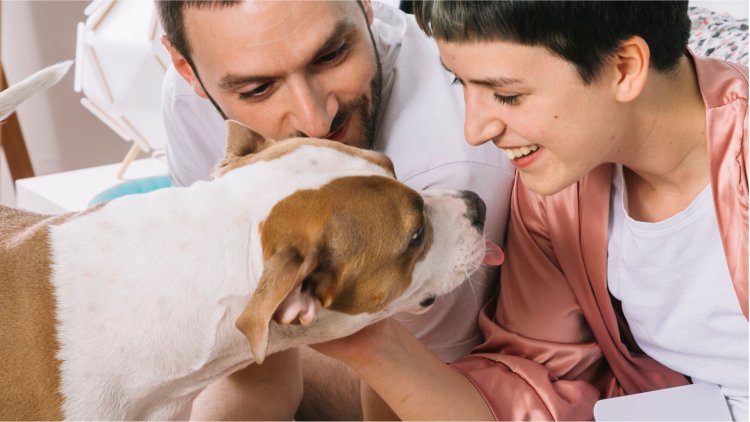What Does Pet Insurance Cover?
Pet insurance is a growing trend among pet owners who want to safeguard their furry friends against unexpected veterinary expenses.

Pet insurance is a growing trend among pet owners who want to safeguard their furry friends against unexpected veterinary expenses. Just like health insurance for humans, pet insurance provides a financial safety net for a range of medical treatments, helping to ease the burden of costly veterinary bills. This article aims to provide a comprehensive overview of what pet insurance covers, the common conditions and treatments included, and factors to consider when choosing a policy.
Types of Pet Insurance Coverage
Accident-Only Coverage
Accident-only pet insurance is the most basic type of coverage. It is designed to cover the costs associated with injuries resulting from accidents. This includes situations like traffic collisions, falls, or ingestion of foreign objects. For instance, if your pet is hit by a car or swallows a toy, an accident-only policy would cover the emergency care, surgery, and medications needed to treat these injuries.
Accident-only coverage is often the most affordable option, making it a suitable choice for pet owners who want some level of financial protection but do not require comprehensive coverage. However, it is important to note that this policy does not cover illnesses or preventive care.
Accident and Illness Coverage
Accident and illness coverage offers a more comprehensive protection plan compared to accident-only policies. This type of insurance covers both accidental injuries and a wide range of illnesses. For example, if your pet contracts a disease like diabetes or suffers from a condition such as cancer, this policy would help cover the associated medical expenses.
This broader coverage is particularly useful for pet owners who want to ensure that they are protected against both unforeseen injuries and unexpected illnesses. It often includes coverage for diagnostic tests, treatments, surgeries, and medications related to both accidents and illnesses.
Wellness or Routine Care Coverage
Wellness or routine care coverage is an additional type of pet insurance that focuses on preventive care and routine maintenance. This includes costs associated with vaccinations, annual checkups, flea and tick prevention, dental cleanings, and other preventive measures.
While wellness coverage is not always included in standard accident and illness policies, it can be added as an optional rider or purchased as a separate plan. This type of coverage helps pet owners manage the cost of routine care and ensures that their pets receive regular, preventive health services.
Common Conditions Covered by Pet Insurance
Illnesses
Pet insurance generally covers a broad range of illnesses, from common infections to serious diseases. Coverage typically includes diagnostic tests, treatments, and medications for conditions such as:
- Cancer: Treatment options like chemotherapy or surgery.
- Infections: Coverage for bacterial, viral, or fungal infections.
- Respiratory Conditions: Treatment for diseases such as pneumonia or asthma.
- Digestive Disorders: Coverage for gastrointestinal issues like diarrhea or vomiting.
By covering these conditions, pet insurance helps alleviate the financial strain of treating illnesses that could otherwise be quite expensive.
Accidents
Accidents are a significant area of coverage for pet insurance. Common accidents covered include:
- Fractures and Sprains: Emergency treatment and surgical intervention for broken bones.
- Foreign Object Ingestion: Costs associated with endoscopy or surgery to remove ingested items.
- Trauma: Treatment for injuries sustained in accidents such as falls or vehicle collisions.
Accident coverage ensures that pet owners can provide prompt and effective care for their pets without worrying about the cost.
Hereditary and Congenital Conditions
Hereditary and congenital conditions are health issues that are present from birth or are inherited from the pet’s parents. Examples include:
- Hip Dysplasia: A genetic condition that affects the hip joints.
- Heart Defects: Conditions such as congenital heart disease.
- Epilepsy: A neurological disorder that may be inherited.
Many pet insurance policies cover these conditions, but it is important to check the specifics of each policy, as coverage may vary. Hereditary and congenital conditions often require long-term management, making insurance coverage crucial for ongoing treatment costs.
Chronic Conditions
Chronic conditions are long-term health issues that require ongoing treatment. Examples include:
- Diabetes: Requires insulin injections and regular monitoring.
- Arthritis: Involves pain management and possibly surgery.
- Kidney Disease: Requires medication and dietary management.
Pet insurance helps cover the costs associated with managing chronic conditions, ensuring that pets receive the necessary care throughout their lives.
What May Not Be Covered
Pre-existing Conditions
One of the most important exclusions in pet insurance policies is pre-existing conditions. A pre-existing condition is any health issue that was present before the insurance policy was purchased or before the policy's effective date. For example, if your pet had a known condition like diabetes before obtaining insurance, treatments for that condition would typically not be covered.
Insurance providers generally do not cover pre-existing conditions to prevent moral hazard and to keep premiums affordable. It is crucial for pet owners to understand this exclusion and ensure their pets receive necessary care before the onset of insurance coverage.
Elective Procedures
Elective procedures are treatments or surgeries that are not medically necessary. These might include:
- Cosmetic Surgeries: Such as tail docking or ear cropping.
- Claw Removal: Often done for convenience rather than necessity.
Pet insurance typically does not cover elective procedures, as these are considered non-essential and not directly related to the pet’s health.
Breeding-Related Costs
Breeding-related costs are also excluded from most pet insurance policies. This includes expenses related to pregnancy, childbirth, and complications associated with breeding. Pet insurance is generally intended to cover health issues and emergencies, not the costs associated with reproductive activities.
Behavioral Issues
Coverage for behavioral issues is another area where pet insurance often has limitations. Treatments for behavioral problems such as anxiety or aggression are generally not covered, as these issues are considered outside the scope of typical medical care.
Factors That Affect Coverage
Several factors can influence the coverage provided by pet insurance policies:
- Age of the Pet: Older pets may have higher premiums and may face limitations on coverage due to age-related health issues.
- Breed-Related Risks: Certain breeds are more prone to specific health conditions, which can affect coverage options and costs.
- Pre-existing Health Conditions: As mentioned earlier, pre-existing conditions are not covered, impacting the overall coverage available.
- Chosen Insurance Plan and Policy: Different insurance providers offer various plans with differing levels of coverage. Choosing the right plan depends on the individual needs of your pet and your budget.
How to Choose the Right Coverage
Choosing the right pet insurance coverage involves evaluating several factors:
- Assessing Your Pet’s Needs: Consider your pet’s breed, age, and health history. This will help determine the type of coverage that is most suitable.
- Comparing Policy Options: Research different insurance providers and compare their coverage options, premiums, and exclusions. Look for policies that offer comprehensive coverage while fitting your budget.
- Reading the Fine Print: Carefully review the terms and conditions of the policy. Pay attention to coverage limits, deductibles, and exclusions to ensure you fully understand what is and isn’t covered.
Final Thoughts
Pet insurance can be a valuable investment for pet owners, providing financial protection against a range of medical expenses. Understanding what pet insurance covers, including common conditions and exclusions, is essential for making an informed decision. By carefully assessing your pet’s needs and comparing different policies, you can select a plan that offers the best protection for your furry friend while fitting within your budget. With the right coverage, you can ensure that your pet receives the necessary care and attention, no matter what health challenges may arise.
What's Your Reaction?



















